-- From Khao Yai NP to the border of Laos
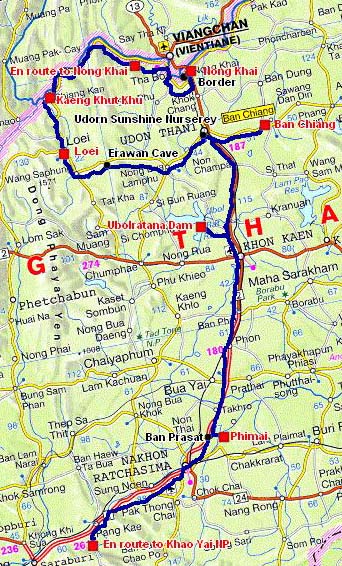
The road tracklog
from Khao Yai NP to the border
from 12/01 to 20/01/2009
Isan
The North-East of Thailand is at the borders of several countries located on the plateau of Korat at an average altitude of 170 meters GPS on which 5000 years ago, the civilization of Ban Chiang developed, which cultivated rice and produced bronze and iron. The inhabitants of Thailand call this area Isan from the Sanskrit Isana name given to the Mon-Khmer who lived there. In the south the empire of Angkor built many temples on trade route leading to Angkor Wat. In the north the kingdom of Lan Xang from Viang Chan – Vientiane- opened trade route along the Mekong River. The dividing line of this cultures is roughly at the latitude of Udon Thani. This area is a genuine melting-pot of cultures, Khmer, Lao and Thai.
The 12/01 I left Khao Yai NP to head towards the north by the highway n°2 by passing again in Nakhon Ratchasima where I stopped to publish a page of my website. I had difficulties to render comprehensible me of the person in charge for the Internet café who wanted neither to connect my laptop nor to connect my USB key. Finally it agreed to use the latter on the server to transfer my files on the station that he had allocated me. The maintenance of a website and its weekly publication are a true priesthood. Sometimes, it was the case, some pictures are published with transmission errors due that the DOS script which I wrote and which I use with my USB key did not carry out integrity control of the transmitted data. On the other hand with the laptop I use a CuteFTP software; I will correct the anomalies as soon as I can connect it.
At 44 kilometres away from Nakhon Ratchasima the village of Ban Prasat at the edge of the Lam Tarn Prasat River was the place of settlement, 2500 to 3000 years ago, of a group of people who lived around 500 years there. Three excavation pits in the village in the open air expose burials of these human with their utensils, potteries, ornaments and textiles. Alas the museum was closed.
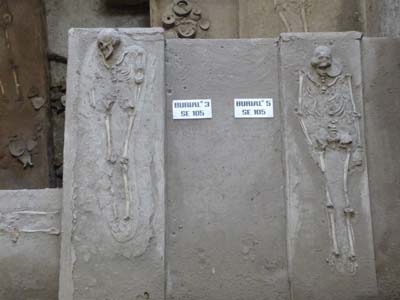
Burial
12/01/2009
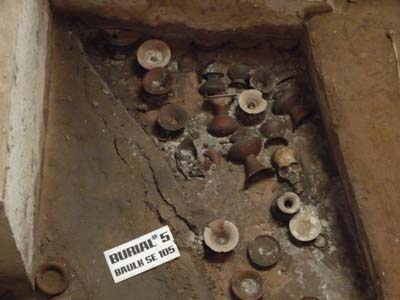
Potteries (Burial)
Ban Prasat
12/01/2009
Around 15 kilometres further on the village of Phimaï has one of the three jewels of the Khmer art in Thailand. Prasat Phimaï, like Phanom Rung, is an example of architectural balance like Angkor Wat. It was built int the 11th century by King Suriyavarman. Dedicated to the Hindu trilogy it was converted in Mahayana Buddhism. It was not my day of chance the museum was also closed until Wednesday!
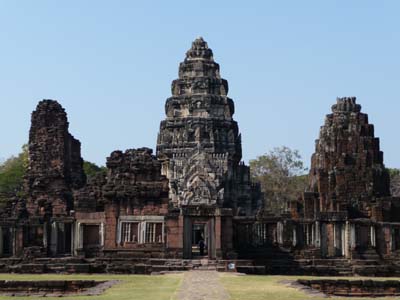
Main
Prasat
Phimaï
12/01/2009
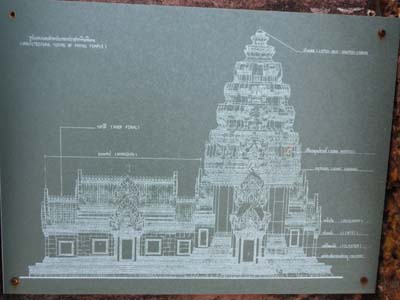
Schema
Phimaï
12/01/2009

Garuda
Phimaï
12/01/2009
Meru Boromathat is a brick chedi, stupa, dating back to the Ayuthaya period. I establish my bivouac on the edges of Khlong Chakri.
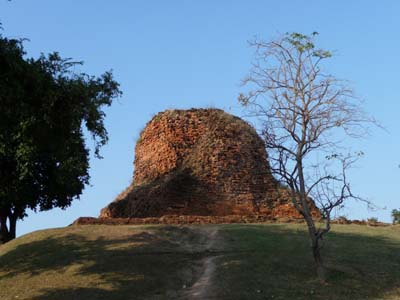
Meru Boromathat
Phimaï
12/01/2009
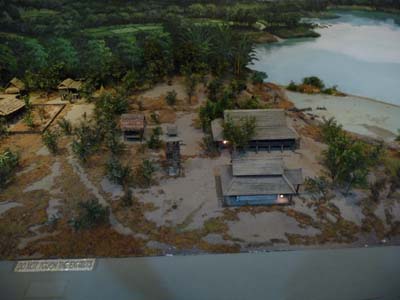
City museum
Khon Kaen
13/01/2009
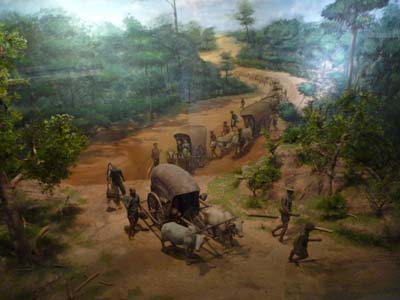
City museum
Khon Kaen
13/01/2009
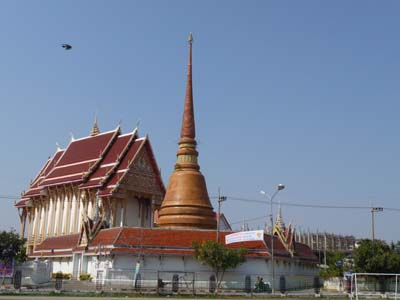
Wat That
Khon Kaen
13/01/2009
The 13/01 Khon Kaen was only one stage for looking for an Internet Café authorizing the
connection of my laptop. After more than two hours and the visit of several
shops, I took act of the refusal of the persons in charge. At the beginning of
afternoon I visited the City Museum exhibiting from dioramas the history of
Khon Kaen and its inhabitants for more than 5000 years. The scenography and
the realization of the models are remarkable; this museum is worth a detour.
Nearby Wat That was the occasion to take a picture.
I left this regional metropolis to establish my bivouac at Ubolratana Dam
whose dam was completed in 1964.>
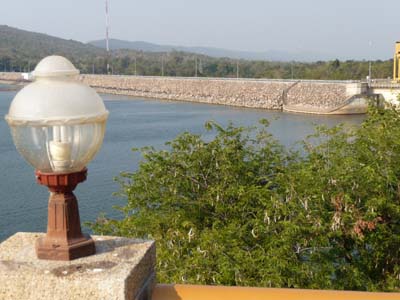
Ubolratana Dam
13/01/2009
14/01 I left Ubolratana by an early coldish morning, 14°C, in a misty campaign. The day was announced brilliant under the best auspices although at a control of police an indelicate policeman asked me for 200 baths, it told him a categorical refusal: NO.
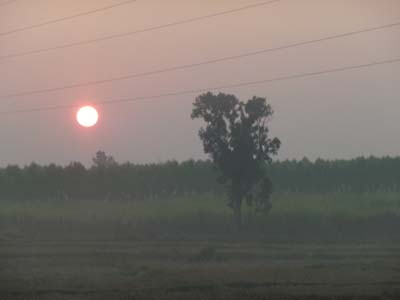
en route
14/01/2009
I arrived in Ban Chiang in the middle morning under a heat winter sun, 27°C. The museum of Ban Chiang is one of the most remarkable than I visited since long months by the richness of the collections: bronze, ornaments, bracelets and collars, potteries coming from burials and by scenography traditional for objects accompanied by dioramas putting in prospects the activity of this 5600 year-old civilization, from 3600 BC to 200 AD. The English labels are very didactic. The inhabitants cultivated rice and produced bronze and iron although there are no mines in the vicinity. The quality of metals indicates an exceptional technology: control components, moulding and cold forging. The ceremonial of the burial shows a belief in a life after death. After a long visit at the end of the morning I went again for a last overview after having lunch. I bivouacked on the spot at the edge of a pond.
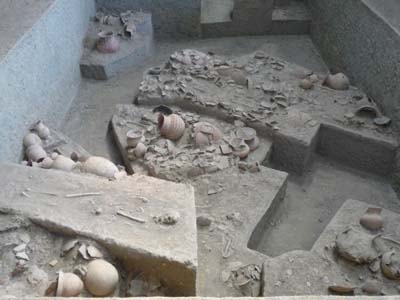
Burials
Ban Chiang
14/01/2009
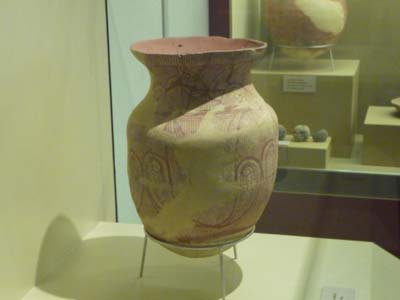
Potteries
Ban Chiang
14/01/2009
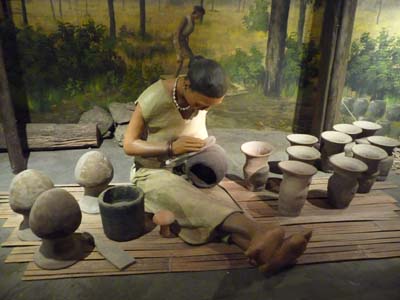
Diorama
Ban Chiang
14/01/2009
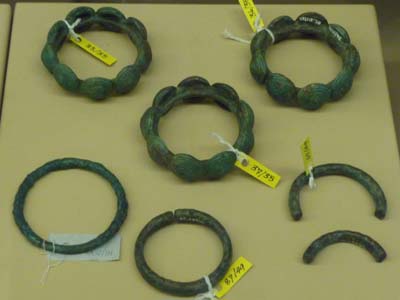
Ornaments
Ban Chiang
14/01/2009
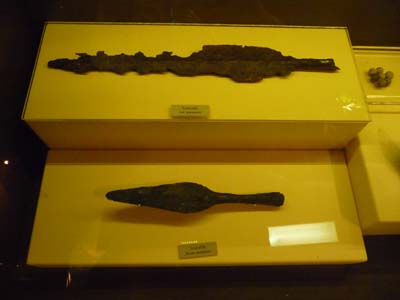
Spearpoints
Ban Chiang
14/01/2009
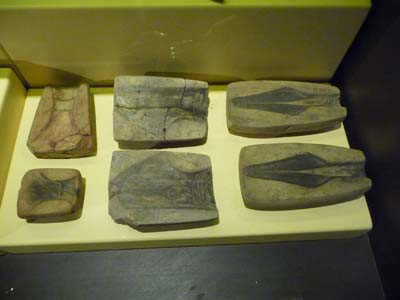
Moulds
Ban Chiang
14/01/2009

Ban Chiang
14/01/2009
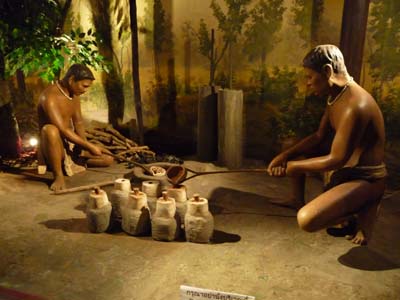
Diorama
Ban Chiang
14/01/2009
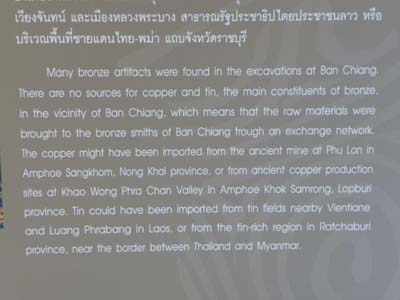
Ban Chiang
14/01/2009
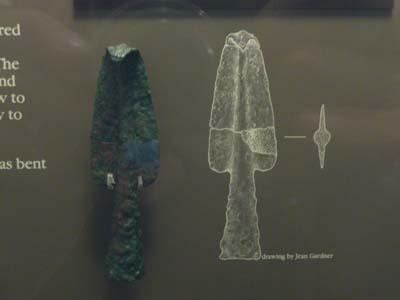
Spearpoint
Ban Chiang
14/01/2009
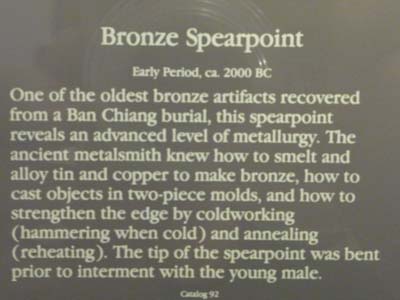
Ban Chiang
14/01/2009
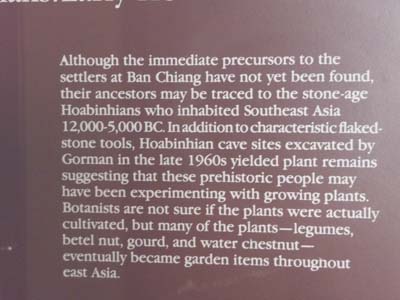
Ban Chiang
14/01/2009
The 15/01 was a transition day, crossing through Udon Thani towards Loei. By passing I threw a glance at Udon Sunshine Nursery, a farm of breeding of orchids. It was not the season of flowering and the perfume of the orchids was not perceptible, the temperature was too cold.
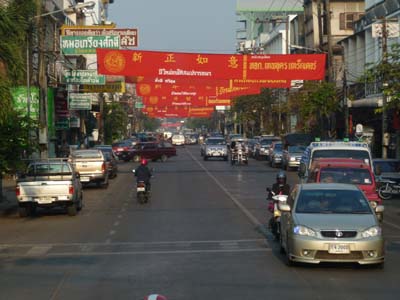
Udon Thani
15/01/2009
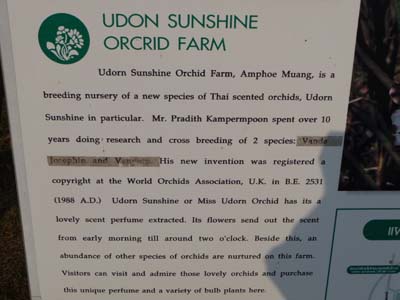
Udon Sunshine Nursery
Udon Thani
15/01/2009
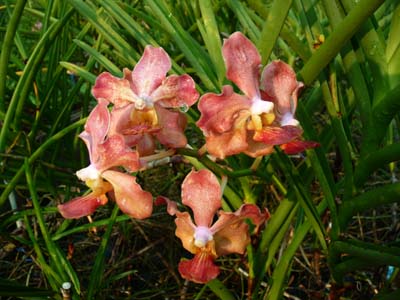
Josephin
Udon Thani
15/01/2009
A little further on I headed a two-kilometre detour and I climbed 600 stairs to look at an Erawan Cave and a Giant Buddha. It was a sporting aperitif because it hasn’t anything to see there.
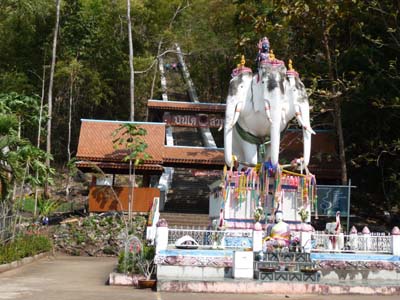
Erawan Cave
Tham Erawan
15/01/2009
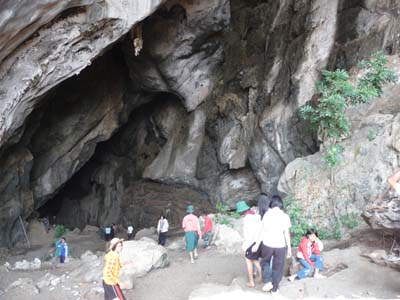
Erawan Cave
Tham Erawan
15/01/2009
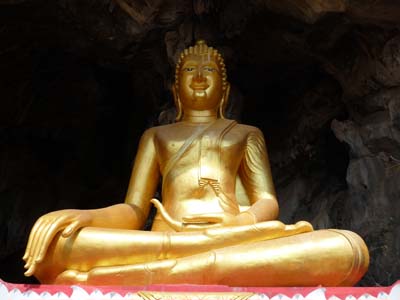
Bouddha Géant
Erawan Cave
15/01/2009
The province of Loei is at an altitude higher than the plateau of Korat, approximately 250 meters high. The vegetation is different and the culture of the sugar cane replaces the rice paddies. It is the area of the extremes, the coldest in Thailand; the temperature can go down to zero degrees Celsius in winter and the hottest in summer. The city of Loei is a provincial capital without particular sight. There was only one Internet Café which refused a connection of my laptop. Finally it was a quiet day without much relief. I bivouacked on the spot.
In the early morning of the 16/01 the outside temperature was approximately 7° C under my truck. Northwards of the city in the Rajabhat University campus the Cultural Center exhibits in a small badly light and badly arranged room two masks of the Phi Ta Khon Festival in Dan Sai.
Phi
The Spirit worship, Phii, also called animism, developed before the introduction of
Buddhism into Laos with which it cohabits peacefully. One of the spirits which
live the natural elements is the spirit of the house in front of which a small
temple on a pedestal is the devotion object.
In Dan Sai in June the Shaman, his wife and his assistants led propriation
during three days to the most important spirits, the guardian spirits. The
festivities last three days during which villagers carry very coloured masks
and are in trance.
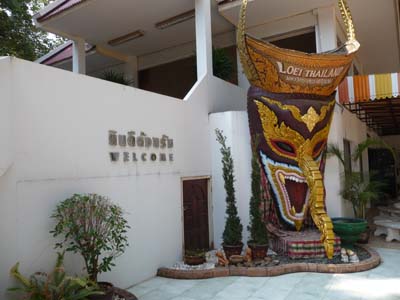
Cultural Centre
Loei
16/01/2009
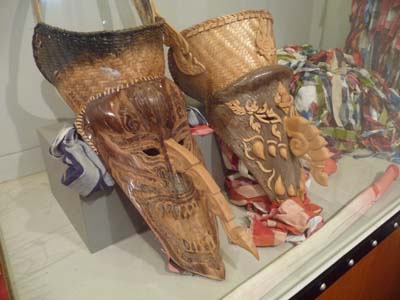
Cultural Centre
Loei
16/01/2009
At 40 kilometres away northwards from Loei the town of Chaing Khan stretches along the Mekong River, border with Laos, on two parallel streets joined together by perpendicular lanes. Its attraction is the quietude of the life of its inhabitants who greeted me merrily and its sights are the architecture of its temples of Lao influence. One of them, Wat Pa Klang, has an entry with colonnades of French influence of the 19th century.
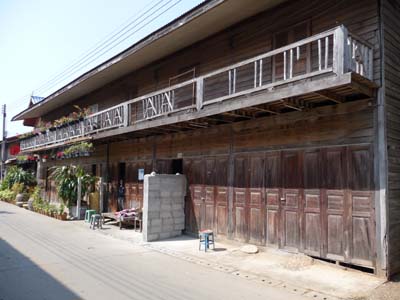
Wooden houses
Chiang khan
16/01/2009
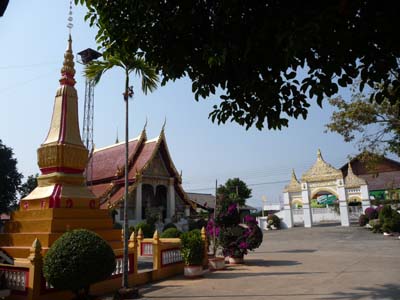
Wat Si Khun Meuang
Chiang Khan
16/01/2009
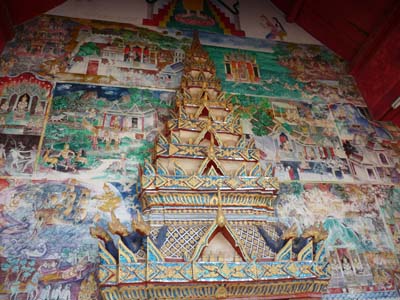
Wat Si Khun Meuang
Chiang Khan
16/01/2009
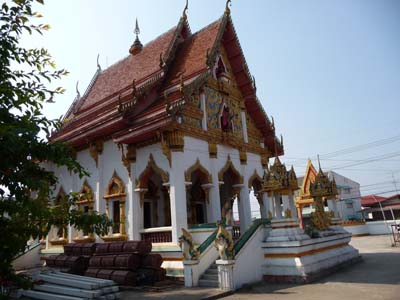
Wat Pa Klang
Chiang Khan
16/01/2009
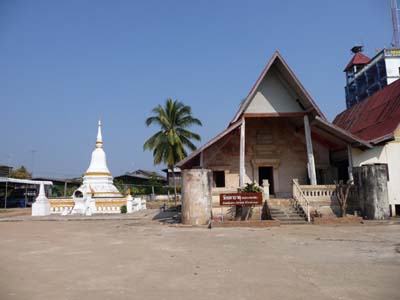
Wat Mahathat
Chiang Khan
16/01/2009
In the late afternoon I establish my bivouac in Kaeng Khut Khu whose rapids of the Mekong River are famous up to Bangkok. Alas as elsewhere they are visible only during the wet season.
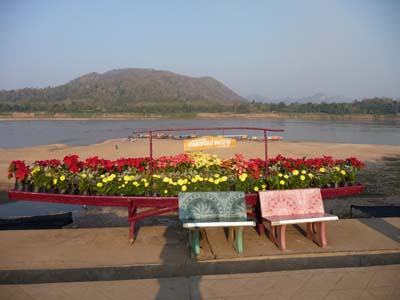
Wide-angle View
Kaeng Khut Khu
16/01/2009
From Chiang Khan the road skirts the mighty Mekong River by meandering between fields of sugar trees and mountains. The 17/01 was a short driving day without sights to be visited. I stopped in the early afternoon vis-à-vis the Mekong River in front of the mountains in Laos overhang fields of tomatoes and sugar trees, very bucolic and relaxing.
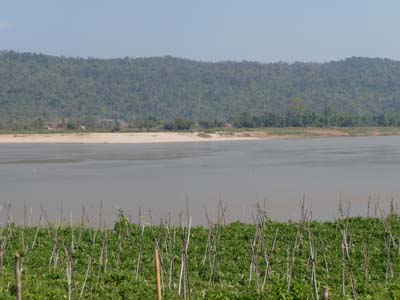
Le Mékong
En route
17/01/2009
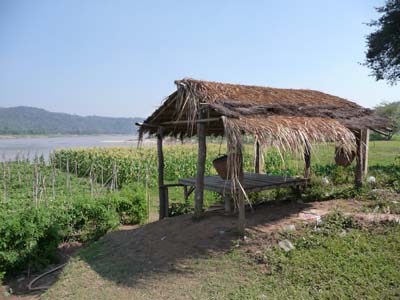
Bivouac
En route
17/01/2009
After a pale early morning and a morning of checking my truck before heading again to tracks in Laos, the 18/01 I moved towards Nong Khai, border town with Laos, where the Thai Lao Friendship Bridge is. On the move I visited two major temples.
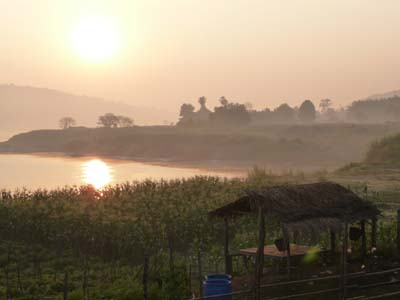
Petit matin blême
En route
18/01/2009
Wat Hin Mak Peng is known in Thailand by monks who made wishes of asceticism. It is located in a vast raised park favourable with contemplation and meditation.
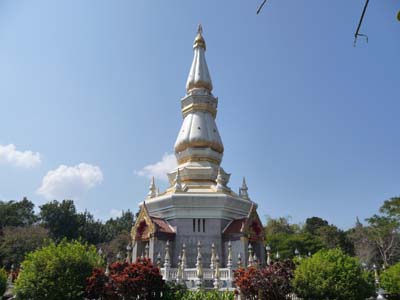
Wat Hin Mak Peng
En route
18/01/2009
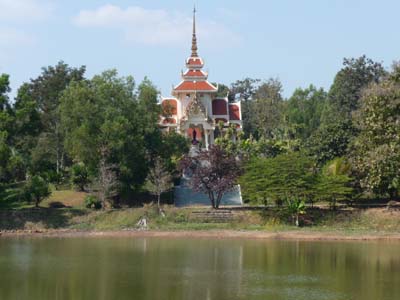
Wart Hin Mak Peng
En route
18/01/2009
Topiary are trees and bushes sculpted by artist gardeners, boxing match.
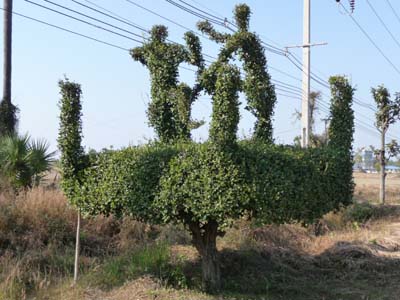
Topiari
En route
18/01/2009
Wat Phra That Bang Phuan dates back to the first centuries AD with a brick Indian-style temple. The ruins are peppered in the park where the Buddha is supposed to have retested. In 1559 king Jayachettha of Wiang Chan, Vientiane, built a new Lao-style temple.
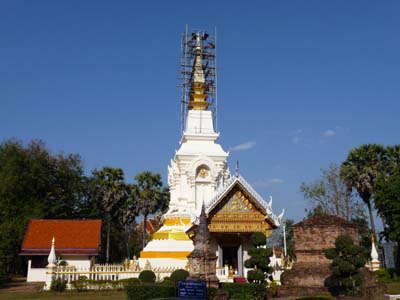
Wart Phra That Bang Phuan
En route
18/01/2009
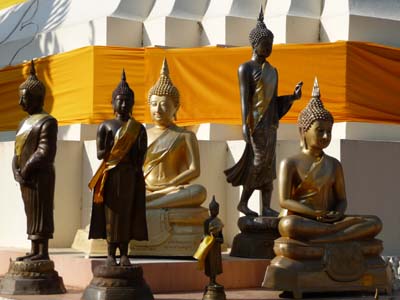
Wat Phra
That Bang Phuan
En route
18/01/2009
I bivouacked again at the edge of Mekong River in Nong Khai.
At Nong Khai the 19/01 I visited rare sights of this borderr town. I started with an extravagant Sala Kaew Ku Sculpture Park conceived and built during 20 years by a Shaman who died in 1996. The park gathers gigantic sculptures out of brick and concrete from Hinduist and Buddhist iconography according to the philosophy of his creator. Any thing equalizes in addition are “giants of garden”. The greatest statue is 25 high and represents the Buddha protected by seven-headed Naga.
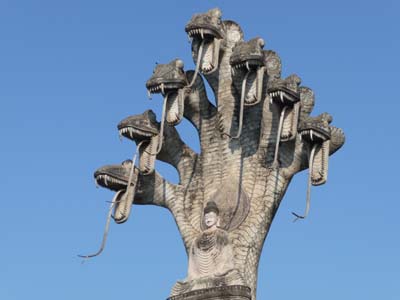
Sala Kaew Ku Sculpture Park
Nong Khai
19/01/2009
ThreeLao-style temples held my attention. Wat Lam Duan with a giant Buddha overhanging the city at the edge of Mekong River.

Wat Lam
Duan
Nong Khai
19/01/2009
Wat Phi Chai exhibits a Buddha whose head is pure gold and the body is bronze.
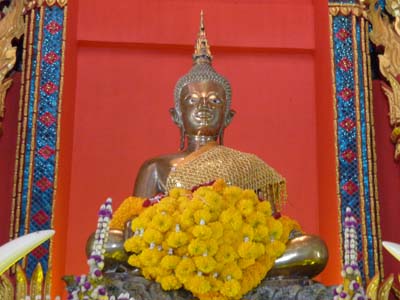
Wat Pho Chai
Nong Khai
19/01/2009
Wat Tung Sawang is the smallest with an exquisite architecture.
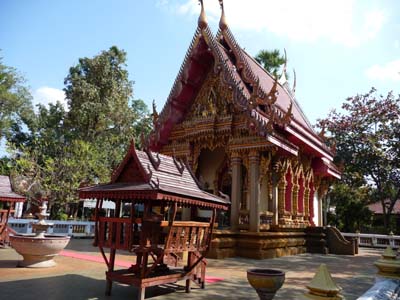
Wat Tung
Sawang
Nong Khai
19/01/2009
Nord-east of Thailand
I finish my fifteen-day trip in the north-eastern area of Thailand with a question mark.
France, colonist in 19th and the beginning 20th century, had wished to
attach the plateau of Korat to Laos. Vicissitudes of WWI and crisis in 29
prevented. Undoubtedly the north of this area is of Lao culture and the south
of Khmer culture. Since a century the syncretism of these two cultures gave
the Isan culture.
What would this area have become if the gun-boat diplomacy of France had been
carried out successfully?
I arrived at the border between Thailand and Laos the 20/01 around 10:30. I gave the “Simplified Customs Declaration Form” and the complementary document “Information of Conveyance” to the customs and my passport to immigration. The procedure lasted hardly ten minutes. At the exit of Thailand the medical inspection of my truck cost 150 THB with a receipt. The entry Laos is reported by the Laos travelog.